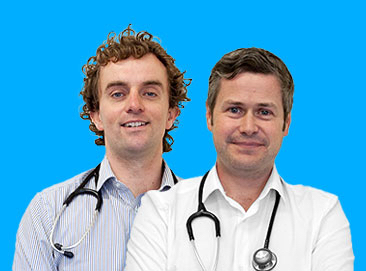Introduction to the 60% Tax Trap for NHS Doctors
You might reasonably think that the maximum rate of income tax in England and Wales is 45%, currently paid by those who earn over £125,140, but you’d sadly be wrong. There exists a 60% tax trap out there that NHS Doctors might be liable for. This secret 60% effective income tax rate exists for people earning much less than £125,140. In this blog, we’re going to tell you who’s affected by this and tell you how NHS doctors can avoid the 60% tax trap!
Worryingly, the Telegraph reported that the number of UK taxpayers caught in the 60% tax trap rose by 18% last year, and it’s estimated that it’s risen by 45% over the last two years.
What is the 60% marginal tax rate trap?
Let’s start with the basics. You’re probably familiar with the main income tax rates in the UK. In England, Wales, and Northern Ireland, these rates are 20%, 40%, and 45% depending on your income. In Scotland, they range from 19% to 48%. However, there’s an additional concept we need to understand: the marginal tax rate. This is the rate of tax you’ll pay on your next pound of income.
Let’s take an example of an NHS GP in London earning £70,000. If this doctor gets a pay rise, they might expect to pay the 40% higher tax rate on that additional income. But once your income hits £100,000, things get more complex. For every £2 extra you earn over £100,000, you lose £1 of your personal allowance, meaning you pay more tax on this amount that you might expect. This can create a marginal tax rate of up to 60% on income between £100,000 and £125,140. In Scotland this marginal tax rate is even higher at 67.5%. So, as an NHS doctor how can they avoid the 60% tax trap? There are legal ways to do it, which we’ll cover later.
Why do NHS doctors need to avoid the 60% tax trap?
Why does it even exist? Well, it’s essentially the result of clawing back your personal allowance, a measure introduced by the government in 2010 to help manage the national debt after the Financial Crisis of 2008. NHS doctors will be facing this clawback between £100,000 and £125,140 because at this level, every £2 over £100,000 you earn will result in a loss of £1 of the personal allowance, resulting in the 60% tax trap.
So, what does this look like in real terms? Imagine you are earning £100,000 and you receive an additional £500 of income in the tax year. That additional £500 will attract income tax at 40% but it will also mean your personal allowance is reduced by £1 for every £2 you are over £100,000 so the personal allowance is reduced in this example by £250. So your taxable income actually goes up by £750 rather than the £500 extra pay and £750 taxed at 40% gives an additional tax bill of £300. So, you receive £500 but pay additional income tax of £300 and hence your marginal tax rate is 60% here.
And don’t forget that this ignores National Insurance, student loan repayments and the NHS Pension if applicable so the cost could be even higher, in a further 62% tax trap for NHS doctors.
What does the 60% tax trap look like in the real world for NHS doctors?
This higher tax rate can be particularly relevant to NHS doctors likely to be affected by the 60% tax trap, whose income levels often push them close to or over the £100,000 threshold, especially when factoring in additional work or bonuses.
To make things worse, if you have children, crossing that £100,000 mark also means losing access to the Tax-Free Childcare Scheme, further reducing the net benefit of any income earned above this threshold.
By the way, you may hear people talk about something called adjusted net income, it’s your adjusted net income that matters when looking at this £100,000 threshold – adjusted net income put simply is taxable income less any allowable tax reliefs to get net income with a few adjustments for charitable donations and pension contributions.
What medical school didn’t teach us about money
“What medical school didn’t teach us about money” will give doctors a step by step plan to transforming your financial future. Enter your details to download your copy now

How can NHS doctors avoid the 60% tax trap?
Here are seven ways that NHS doctors can avoid the 60% tax trap:
Strategy 1 – Maximise Employment Expenses
Firstly, ensure you’re claiming all allowable employment expenses. Items like professional subscriptions and Royal College exams can be deducted to reduce your net income. This can help NHS doctors avoid the 60% tax trap and keep them below the critical £100,000 threshold.
Strategy 2 – Make use of Gift Aid donations
If you support charities, consider making use of the Gift Aid scheme. Donating to charity not only helps extend your basic rate band by the grossed-up amount of donation thus reducing your tax bill but ALSO reduces your adjusted net income AND helps do some good in the world!
For every £800 donated, the charity receives £1,000, and higher- and additional-rate taxpayers get additional tax relief, which lowers their adjusted net income and brings down their tax burden.
You can deduct the grossed-up gift aid payment to reduce your adjusted net income. You can also carry back gift aid payments to the previous tax year though I should add that the rules are strict, and you can only claim via your tax return when it is originally submitted, you cannot amend a return subsequently to claim gift aid. Something to think about if you find that your adjusted net income for last tax year is over £100,000 and you need to avoid the 60% tax trap.
Strategy 3 – Contribute to a Private Pension
Making additional contributions to a private pension scheme is another effective way to reduce your adjusted net income and allows NHS Doctors to avoid the 60% tax trap. Private pension contributions give you tax relief at your marginal rate and can bring your adjusted net income below the £100,000 mark. But be cautious—due to contribution limits such as the annual allowance, it’s best to consult with a financial advisor before making large pension contributions. We have seen people online saying that you can carry pension contributions back to the previous tax year to reduce your adjusted net income for that year but that isn’t right sadly.
Strategy 4 – Take Advantage of the NHS Pension Scheme
The NHS pension scheme is another valuable tool for doctors. This pension is included when calculating your net income, so ensuring your contributions are up-to-date and correctly calculated will help keep your income level at a manageable rate, potentially below the high tax threshold. This is a helpful tool to help doctors avoid the 60% tax trap.
Strategy 5 – Plan around Child Benefits
This is less about the 60% tax trap but more about a separate tax trap to be honest. If you have children and are entitled to Child Benefit, note that this is gradually clawed back once you or your partner’s income exceeds £60,000 and must be fully repaid if either income exceeds £80,000. If your income is close to this limit, consider planning around it by maximising expenses or other deductions. Alternatively, you can elect not to receive Child Benefit, avoiding the hassle of having to repay it through a tax return. It is usually better to tell HMRC that you elect not to receive it rather than just ignoring it as you can receive a National Insurance Credit towards your state pension if HMRC are aware you are entitled to it but not claiming it.
Strategy 6 – Equalise Income With your Partner
If you’re in a dual-income household, consider equalising your income with your partner. By shifting income or assets, you can ensure that neither partner’s adjusted net income crosses the £100,000 threshold. This way, both of you can benefit from allowances, avoiding unnecessary clawbacks or higher marginal rates. Don’t forget to use your ISA allowance as interest and dividends earned in ISAs will not be taxable. Equalising income with your partner can be a helpful way for NHS doctors to avoid the 60% tax trap.
Strategy 7 – Avoid Unnecessary Overtime or Bonuses
Finally, if and NHS doctors who’s close to the £100,000 threshold, carefully consider the impact of any extra income, such as overtime or bonuses. While extra income might seem appealing, it could reduce your overall take-home pay once the 60% marginal tax rate is factored in. Instead, consider asking for non-cash benefits, like extra holiday days or contributions to your pension scheme.
Summary: How can NHS Doctors avoid the 60% tax trap?
In summary, the 60%, 62% or 67.5% marginal tax rate can be a costly trap for high-income earners, particularly for doctors whose income fluctuates or hovers around the £100,000 mark. By understanding the thresholds and implementing some or all of these seven strategies, you can protect your income, reduce your tax bill, and keep more of what you earn.
For information on claiming professional expenses and that might help you avoid the 60% tax trap, download out our FREE guide here.
As always, if you need to consult specialist tax accountants, the best place to start is Medics’ Money’s website here. We’ve matched over 10,000 doctors and vetted over 50 advisers to personally work with Medics’ Money to offer the best independent. Talk to one today to help you avoid the 60% tax trap.
Join 30,000 doctors and receive free, exclusive, financial CPD for doctors in your inbox.
Medics’ Money is run by doctors and finance experts, for doctors. Our free financial CPD gives you all the knowledge you need to take control of your finances.









